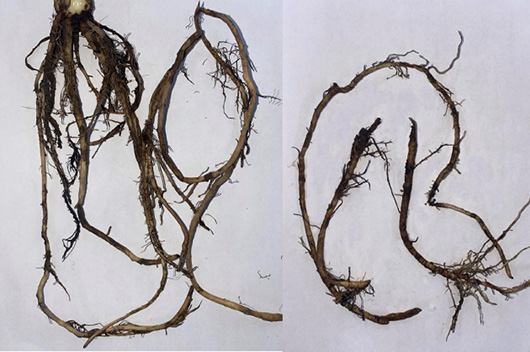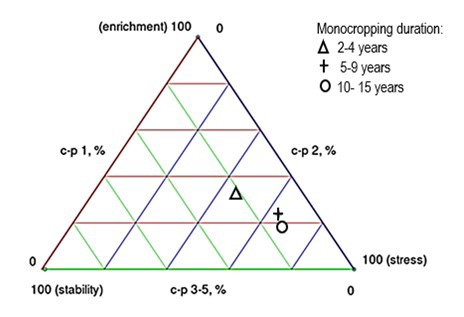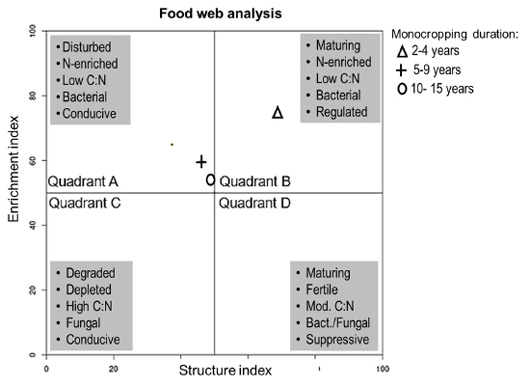Nematode Community Structure in Musa acuminata Colla (Lakatan) Farms with Continuous Cropping System
Nematode Community Structure in Musa acuminata Colla (Lakatan) Farms with Continuous Cropping System
Baby Nhor K. Ambel1*, Nneka Djen A. Matandog1, Neil Pep Dave N. Sumaya2, Florence Roy P. Salvaña1, Bryan Lloyd P. Bretaña1 and Ma. Teodora N. Cabasan1*
Sampling areas of the study with a) 2-4, b) 5-9, and c) 10-15 years of continuous cropping of Lakatan.
Roots with galling, lesions, and rotting symptoms caused by plant parasitic nematodes.
c-p triangle depicting the succession of nematode c-p groups reflecting soil status of banana plantations under different cropping periods.
Food web analysis of nematode communities in banana plantations under different monocropping periods.















